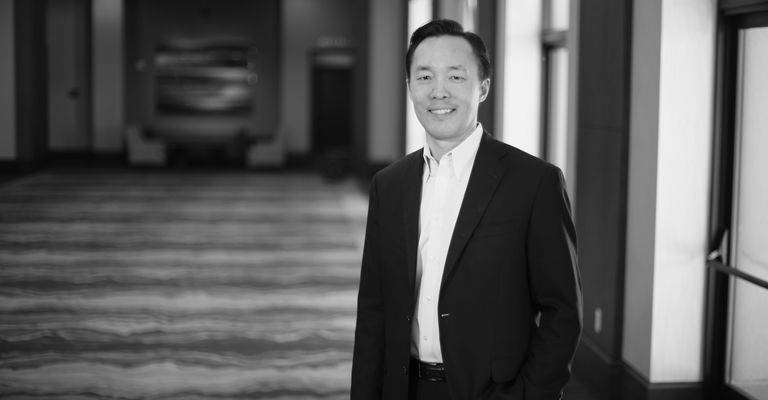Insights
Federal Circuit Clarifies Limits of Prosecution Disclaimer in Patent Families
Jun 11, 2025Summary
Background
Maquet Cardiovascular LLC owns U.S. Patent Nos. 8,888,728 (“the ’728 patent”), 9,789,238 (“the ’238 patent”), and 10,238,783 (“the ’783 patent”). The ’728 patent is the grandparent of the ’238 patent and the great-great-grandparent of the ’783 patent. Also, the ’783 patent is a divisional of the ’238 patent. All three patents are directed toward intravascular pump systems.
Maquet sued Abiomed Inc. and its affiliates for infringing the ’238 patent and later added claims of infringement of the ’783 patent. During claim construction, the district court applied prosecution disclaimer from the ‘238 patent to the ‘783 patent, and from the ’728 patent to the ’783 patent. After claim construction, the parties stipulated to entry of a final appealable judgment of noninfringement, and Maquet appealed to the Federal Circuit.
Prosecution Disclaimer
The doctrine of prosecution disclaimer prevents patentees from recapturing, through claim interpretation, subject matter disclaimed during prosecution. This doctrine differs from prosecution history estoppel, which limits the doctrine of equivalents (which is used when no literal infringement is found).
Prosecution disclaimer from one patent in a patent family applies to another patent in the same patent family when: (1) the patentee made a clear and unmistakable disavowal of a certain meaning of a particular claim limitation during prosecution to obtain a patent in the patent family, and (2) that particular claim limitation in the patent and a claim limitation of another patent in the same patent family are sufficiently similar to each other.
Analysis by Federal Circuit
On appeal, the Federal Circuit found that the district court erred in applying prosecution disclaimer (i) from the ’238 patent to the ’783 patent because the claim terms in the two patents were not sufficiently similar to each other, and (ii) from the ‘728 patent to the ‘783 patent because Maquet’s silence in response to a patent examiner’s statement of reasons for allowance in a Notice of Allowance did not constitute a clear and unmistakable claim disavowal.
Regarding the district court’s first application of prosecution disclaimer, claims 14 and 22 of the ‘238 patent initially claimed an “entire elongate lumen distal to the intravascular blood pump,” which was later amended to “entire elongate lumen distal to the rotor.” In contrast, claim 1 of the ’783 patent recites a “guide mechanism comprising a lumen.” Unlike the ’238 patent, the ’783 patent does not require the lumen to be in a specific position relative to another component. Accordingly, the Federal Circuit held that, despite having common subject matter, the claim terms are sufficiently dissimilar to prevent the application of prosecution disclaimer from the ’238 patent to the ’783 patent.
Regarding the district court’s second application of prosecution disclaimer, claim 15 of the ’728 patent recites “wherein the guide mechanism is configured to allow for a guide wire to slideably advance therealong”, and claim 1 of the ’783 patent recites nearly identical language: “a guide mechanism is configured to allow for a guide wire to slideably advance therealong.” These claim terms were not sufficiently dissimilar to prevent the application of prosecution disclaimer from the ’728 patent to the ’783 patent.
However, instead of applying prosecution disclaimer based on the claim terms themselves, the district court applied prosecution disclaimer from the ’728 patent to the ‘783 patent based on Maquet’s silence in response to the patent examiner’s statement of reasons for allowance in a Notice of Allowance in the ‘728 patent. More specifically, during prosecution of the ’728 patent, Maquet filed a Request for Continued Examination (RCE) and submitted an Information Disclosure Statement (IDS) identifying a reference named Völker. In a subsequent Notice of Allowance for the ’728 patent, the patent examiner discussed how Völker lacked several features of the claimed invention, such as the lumen, and that Völker threads the guide wire through the rotor blades, “which temporarily prevents the rotor from turning.” Maquet never responded to this Notice of Allowance or made any affirmative statements about Völker. The Federal Circuit held that such silence in response to the patent examiner’s Notice of Allowance was not a clear and unmistakable disavowal in the ‘728 patent of a guide wire threaded through the rotor blades, and therefore could not be prosecution disclaimer applied from the ‘728 patent to the ‘783 patent.
Similarly, Maquet’s later statement in a preliminary response during an inter partes review (IPR) proceeding for the ‘728 patent that “the examiner had previously found the claims patentable over … [Völker]” was too broad and vague to constitute clear and unmistakable prosecution disclaimer regarding Völker, as it did not refer to any specific claim or claim term. Accordingly, the Federal Circuit vacated the district court’s judgment of noninfringement for the ’783 patent and remanded the case.
Practice Tips
In general, using flexible language, such as “can,” “may,” and “capable of” in the detailed description of a patent application, in prosecution arguments, and in IPR proceeding arguments is recommended to preserve potentially broader claim interpretation. In contrast, using strong language such as “only,” “must,” ”requires,” “always,” “never,” and ”cannot” in such situations should be avoided unless absolutely necessary. Inventors often want to “nail down” their inventions with strong language, but such language can unintentionally narrow claim scope and may lead to unintended consequences during litigation, including making a situation ripe for summary judgment for noninfringement. Practitioners are thus advised to educate clients on the long-term risks of using such strong language.
Additionally, when a patent examiner makes a statement on the record suggesting that the claims are limited in a way not required by the claim language itself, consider filing comments in response to the patent examiner’s statement to clarify that the claims are limited only by their express terms. For example, if a Notice of Allowance contains an Examiner’s Statement of Reasons for Allowance that (a) compares the invention to the prior art in a way that your client did not intend or (b) paraphrases the claim language, then filing comments in response to the Examiner’s Statement of Reasons for Allowance to clarify the situation is advisable. Although silence might not amount to prosecution disclaimer, proactive clarification can minimize or eliminate arguments during litigation that such silence constituted tacit acquiescence.
Finally, when prosecution disclaimer might limit the claim scope, consider filing a follow-on application, such as a continuation application or a divisional application, to pursue broader claim scope. Use dissimilar claim terms in the follow-on application to reduce the risk of prosecution disclaimer being applied to the claims of the follow-on application.
Related Capabilities
-
Intellectual Property & Technology Disputes
-
Patents: Litigation





